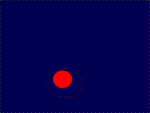
-- A Cyberspace Review Of The Arts
Volume 18.04
March 20, 2011
|
In Eleni Papageorge's recent work, some of which is now showing at Minerva Durham's Spring Studio, the textural, structural and spiritual connections to both the Byzantine and ancient Greek artistic worlds are immediately sensed, before you know anything about the artist. And yet the work in the show is in no way an imitation or direct reflection of the past.
There are three kinds of work in the show: large collages, frieze-like drawings of the nude figure, and a set of portraits. The collages, which are formed as triptychs, are the most immediately impressive, A variety of materials have been used, including the collagist's usual fare of printed illustration, texts, tickets, and small pieces of cardboard with an interesting surface; some of this is painted over with gold paint in the proper fashion of ikons, and a good many figures have golden haloes or auras. A substantial portion of each collage is composed of drawings which the artist had executed previously without the collage in mind and subsequently repurposed very effectively. Unlike most ancient ecclesiastical art, however, the collages as a whole contain a good deal of movement, and the attention of the viewer often directed by the characters in the collage who are looking in one way or another. There is also a certain amount of visual depth in them; the surface plane of the work itself is not insisted upon, as tends to be the case with a classical ikon (and with much 20th- century art as well).
What I am calling 'friezes' are successive drawings of one model on a single long sheet taking various poses during the Life Drawing sessions at Spring Studio, but are drawn in such a way as to suggest both a group of models and movement, rather than static view of a single form. While these drawings have mass, texture and a bit of perspective, in their simplicity and assured precision they remind me strongly of the figurative work which appears on Greek pottery of the classical period, and suggest sculpture of the period as well, especially the bas-reliefs (hence my name for them). Spring studio has sessions for portraiture as well as Life Drawing, from whence come the heads which form the third part of the show. There are quite a few of these. Rather than reminding me of Byzantine art, they have rather the restraint, distance, and repose which I associate with the works of antiquity. Like the 'friezes' they show as well simplicity and assured precision.
As it turns out, the artist has a strong connection with her Greek heritage; her interest in art began when she was a teenager attending a Greek Orthodox Church with her family. Subsequently, still as a teenager, she traveled to Greece, and later studied Byzantine Ecclesiastic Iconography at the (now closed) School of Sacred Arts. She also studied art more generally at Queens College, at the Art Students' League, and of course at Spring Studio. (See her biography for more detail.) Papageorge's works have already received a dubious compliment usually reserved only for the famous: one of the collages was vandalized when someone broke into Spring Studio by night and cut away the left panel of one triptych which happened to be in a more exposed position than the others. The show is now on and will be up at Spring Studio for the next few weeks. The studio, at 64 Spring Street in Manhattan, is open for visits from 5 to 6 p.m.; during the rest of the day, it is a working atelier for Life Drawing classes. |
|
|
|
|
|
|
|
|
Gordon Fitch |
|
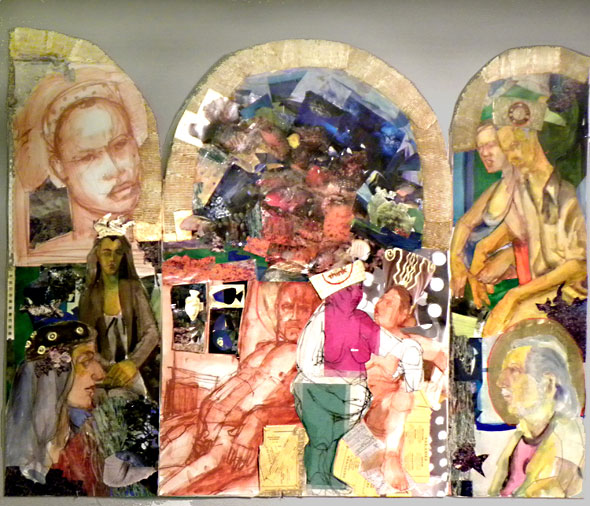
 Byzantine splendor and Attic sense of form have
appeared on Spring Street in Manhattan.
Byzantine splendor and Attic sense of form have
appeared on Spring Street in Manhattan.
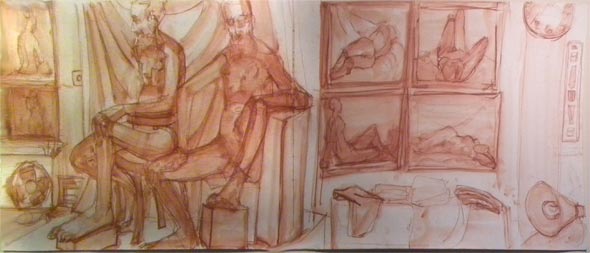
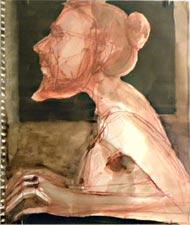
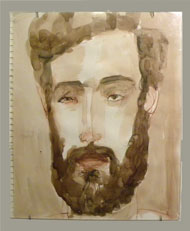
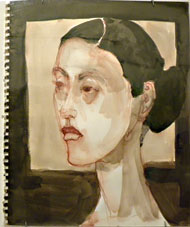
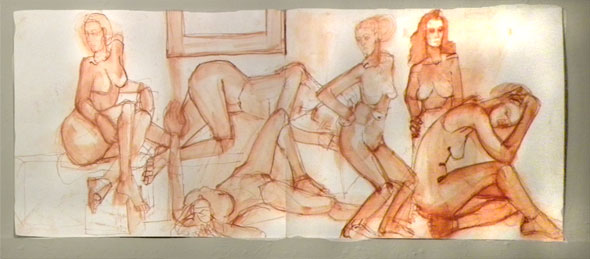
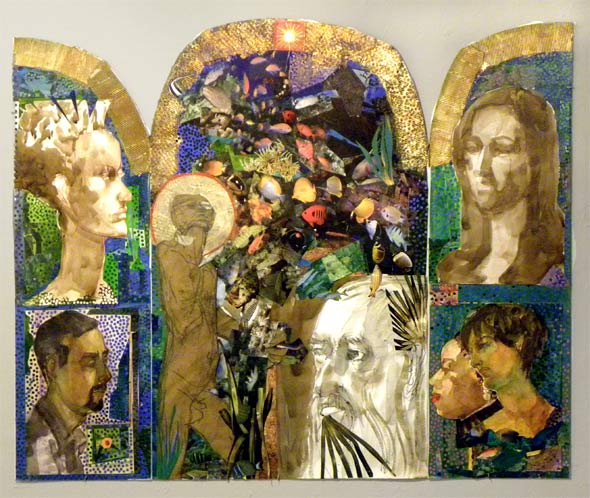
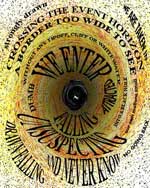
 Back to the Front
Back to the Front